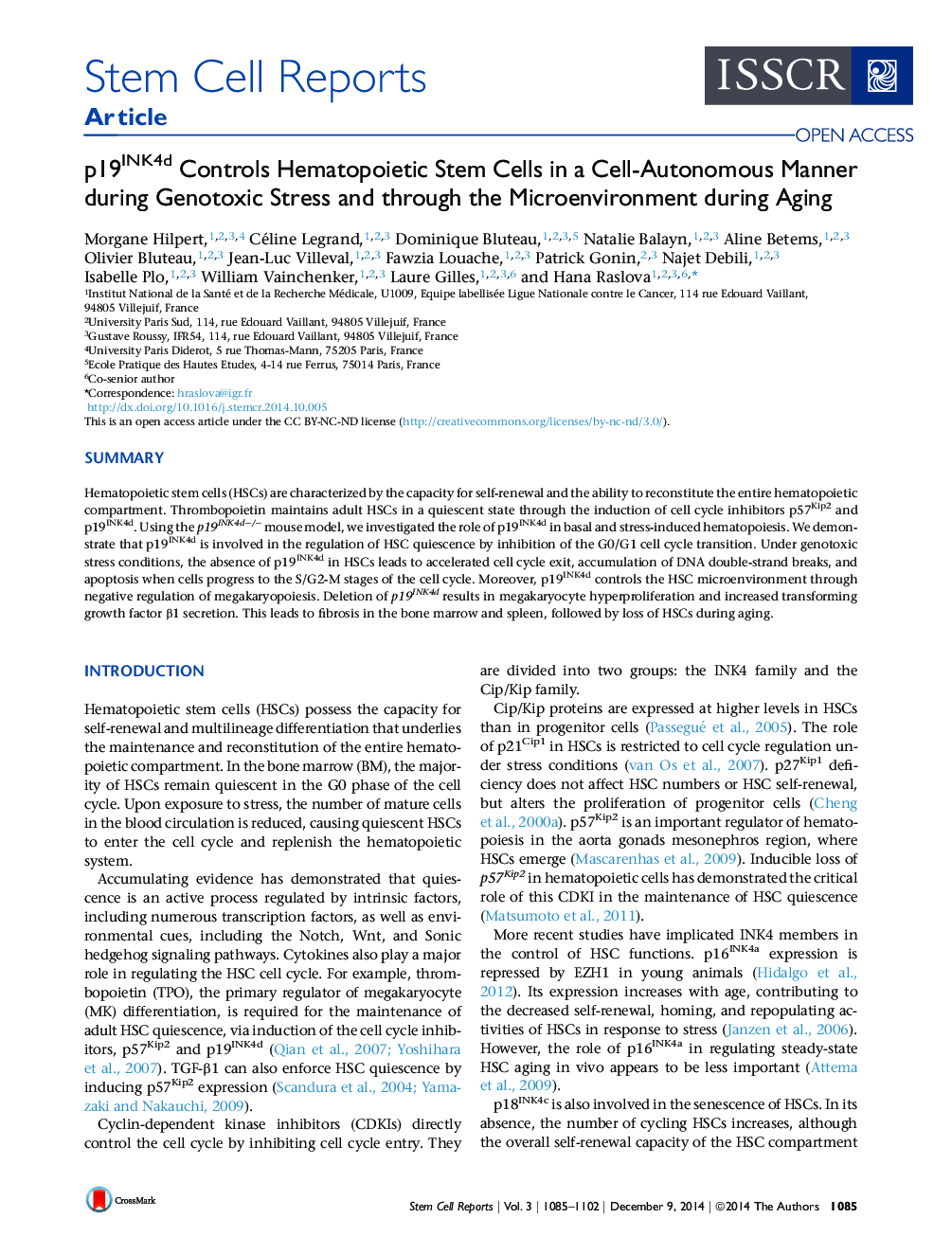| Article ID | Journal | Published Year | Pages | File Type |
|---|---|---|---|---|
| 2093686 | Stem Cell Reports | 2014 | 18 Pages |
•p19INK4d regulates HSC quiescence through inhibition of the G0/G1 transition•p19INK4d protects HSC from DNA damage and apoptosis during genotoxic stress•Absence of p19INK4d leads to MK amplification, splenomegaly, and fibrosis development•p19INK4d controls HSC pool through microenvironment
SummaryHematopoietic stem cells (HSCs) are characterized by the capacity for self-renewal and the ability to reconstitute the entire hematopoietic compartment. Thrombopoietin maintains adult HSCs in a quiescent state through the induction of cell cycle inhibitors p57Kip2 and p19INK4d. Using the p19INK4d−/− mouse model, we investigated the role of p19INK4d in basal and stress-induced hematopoiesis. We demonstrate that p19INK4d is involved in the regulation of HSC quiescence by inhibition of the G0/G1 cell cycle transition. Under genotoxic stress conditions, the absence of p19INK4d in HSCs leads to accelerated cell cycle exit, accumulation of DNA double-strand breaks, and apoptosis when cells progress to the S/G2-M stages of the cell cycle. Moreover, p19INK4d controls the HSC microenvironment through negative regulation of megakaryopoiesis. Deletion of p19INK4d results in megakaryocyte hyperproliferation and increased transforming growth factor β1 secretion. This leads to fibrosis in the bone marrow and spleen, followed by loss of HSCs during aging.
